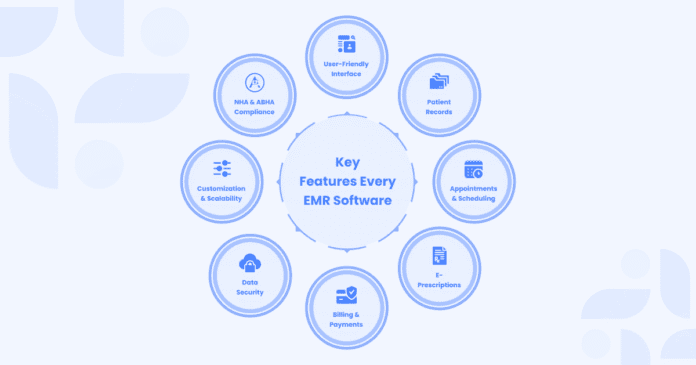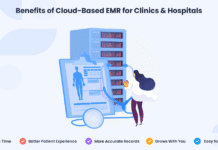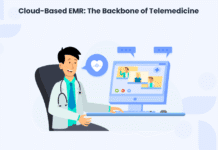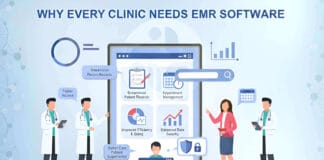
Healthcare in India is moving toward digital at a rapid pace. Patients now expect quick access to care, the government is driving nationwide adoption of digital health systems, and clinics are finding that paper-based records can no longer keep up. This shift has made EMR (Electronic Medical Record) software an essential tool for modern healthcare providers. The key is not to choose software loaded with unnecessary features, but to focus on the must-have functionalities that truly matter for Indian clinics and hospitals. In this blog, we’ll explore the key features of EMR software that every system in India should include.
Why EMR Software Matters in India
India’s healthcare system is massive and diverse, with everything from small single-doctor clinics to large multispecialty hospitals. Without a proper digital system, managing patient records becomes messy and inconsistent. EMR software solves this by standardizing how medical data is stored, accessed, and shared.
If you’re asking why clinics need EMR in India, the answer is simple: it reduces errors, saves time, and creates a connected patient journey.
It also aligns with the government’s vision of building a connected health ecosystem through initiatives like ABHA. For patients, this means better continuity of care. For doctors, it means faster decisions with accurate information at their fingertips. And for clinics or hospitals, it means smoother operations and less paperwork. In short, EMR software is no longer optional; it’s becoming the backbone of modern healthcare in India.
Challenges of Paper-Based Records
Paper files can be misplaced, hard to read, or simply take too much time to manage. For busy clinics, this slows everything down and makes patient care less reliable.
Government Push Toward Digital Health
Through NHA and ABHA initiatives, the government is creating a nationwide health grid. Clinics that use EMRs in line with these standards will be future-ready and better connected.
Key Features Every EMR Should Have
1. User-Friendly Interface
Think about the daily life of a doctor or nurse; every second matters. If the software is clunky, slow, or hard to understand, it steals valuable time from patient care. That’s why ease of use is non-negotiable. An effective EMR should feel natural to navigate, with a clean design and logical flow. It should require minimal training, so even new staff can get started quickly.
2. Patient Data Management
At its core, an EMR is a digital library of patient health information. It holds medical histories, diagnoses, treatment notes, test results, allergies, and everything else that matters in patient care. Having all this organized in one place avoids the mess of scattered files and ensures that nothing gets overlooked. Quick access to accurate patient data leads to better decisions and continuity of care, whether it’s the first consultation or a follow-up after years.
3. Appointment & Scheduling Tools
Managing patient flow can be chaotic without a proper system. That’s where scheduling tools built into the EMR come in handy. They allow clinics to manage multiple doctors, staff calendars, and patient appointments in one place. By cutting down on missed or double bookings, these tools help reduce waiting times and keep operations smooth. For patients, it adds a sense of reliability; they know their time is valued. This is one of the most visible EMR software benefits for clinics: smoother operations and happier patients.
4. E-Prescriptions
Handwritten prescriptions have always been prone to confusion, whether it’s unclear handwriting or lost slips. Digital prescriptions solve this problem. They are clear, easy to share, and stored safely in the patient’s record for future reference. E-prescriptions also ensure accuracy in medication, reduce the risk of mistakes, and make it easier to track treatment progress over time.
5. Billing & Payment Integration
Healthcare isn’t only about treatment; it’s also about the financial side of care. A robust EMR must include billing and payment features. This means generating accurate invoices, tracking payments, and supporting insurance claims seamlessly. When billing is tied into the medical record, clinics can reduce errors, improve transparency, and save time for both staff and patients.
6. Data Security & Privacy
Patient information is extremely sensitive, and even a small slip can damage trust. That’s why EMR software has to take security seriously. It should have strong data encryption, proper access controls, and meet India’s data protection standards.
This isn’t an extra feature; it’s the very foundation of digital healthcare. Without security, the whole system falls apart. Clinics should only trust secure EMR software for Indian healthcare, because patients and doctors need to know their data is safe before they can rely on it.
7. Customization & Scalability
Every healthcare setup has different needs. A small clinic in a rural town won’t function the same way as a multi-specialty hospital in a metro city. That’s why customization matters. The EMR software requirements for Indian clinics are not the same everywhere, so the system must be flexible enough to adapt to unique workflows and scalable enough to handle growth. As the healthcare provider expands, the EMR should grow with it without requiring a complete system overhaul.
8. Compliance with NHA & ABHA Guidelines
In India, compliance isn’t just a formality; it’s a must. Every EMR system needs to meet the rules set by the National Health Authority (NHA) and work smoothly with ABHA (Ayushman Bharat Health Account). This way, patient records aren’t stuck in one clinic or hospital; they can be securely linked and accessed anywhere in the country. The result is a more connected, reliable healthcare system where patients, doctors, and hospitals all benefit.
9. Interoperability
Patients often move across different points of care, such as labs, pharmacies, clinics, and hospitals. If these systems can’t “talk” to each other, information gets lost and care becomes fragmented. Interoperability ensures that patient data flows smoothly between platforms and providers. This not only saves time but also prevents unnecessary repetition of tests or procedures, ultimately improving patient outcomes.
10. Mobile Access
Mobile access isn’t optional anymore, it’s a must. Doctors and medical staff are constantly moving around, whether it’s from one ward to another or between different clinics. Having EMR access on their phones or tablets means they can quickly check patient records, update details, and jot down notes without being stuck at a desk.
In emergencies, this becomes even more critical. Being able to pull up the right information instantly can make all the difference in the care a patient receives.
That’s why a good EMR system should offer two things: easy on-the-go access and secure mobile login, ideally with safeguards like two-factor authentication to keep sensitive data protected.
11. Reporting & Analytics
Data on its own doesn’t do much. The real value comes when you can actually understand it. That’s where reporting and analytics in an EMR help. They can show trends in patient health, point out where a clinic or hospital can run more smoothly, and even support medical research.
For doctors and administrators, this means making smarter choices like how to use staff and resources better, where processes are slowing things down, and how to plan for the future with less guesswork. In short, analytics turn everyday records into useful insights that improve both care and management, showing the wider EMR software benefits in healthcare.
Bonus Features That Add Value
Once the essentials are in place, some extra features can make life even easier:
- AI-powered prescription suggestions that speed up routine care.
- Patient reminders through WhatsApp or SMS, since that’s what most people in India actually use.
- Referral and collaboration tools so doctors can easily connect patients with other specialists.
These aren’t mandatory, but they’re nice to have.
Common Questions About EMR in India
Not yet, but government policies strongly encourage it, and compliance will matter more in the coming years.
EMR is specific to one clinic or hospital; EHR is a broader system that can share records across different providers.
Costs vary by clinic size and features, but cloud-based systems often reduce upfront expenses.
The best EMR is one that’s affordable, user-friendly, and scalable, without forcing unnecessary features.
Conclusion
The right EMR isn’t about having the longest list of features; it’s about having the right ones. So if you’re wondering how to select EMR software for a clinic, focus on usability, compliance, security, and the ability to grow with your practice. From secure patient records and easy scheduling to compliance with ABHA guidelines, a good EMR should make life simpler for doctors, smoother for patients, and more efficient for clinics.
Ready to take the next step? Schedule a free demo with Healcard today and see how the right EMR can transform the way your clinic runs.
📲 WhatsApp: +91 70350 35070
📧 Email: support@healcard.com
🌐 Website: healcard.com




